 Are your social media posts getting enough engagement?
Are your social media posts getting enough engagement?
Do you want tips for connecting with your audience?
Social media engagement is largely determined by how well your social posts trigger action from your target audience.
In this article you'll discover how to boost social media engagement by incorporating psychological triggers in your posts.
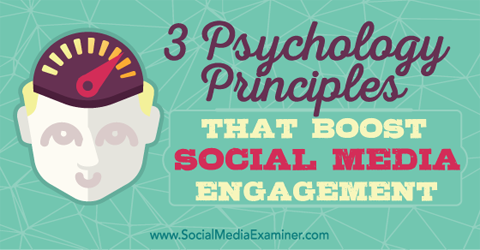
Listen to this article:
Where to subscribe: Apple Podcasts | Spotify | YouTube Music | YouTube | Amazon Music | RSS
#1: Focus on a Desire
In Nobel Prize-winning psychologist Daniel Kahneman's book, Thinking, Fast and Slow, he shared this idea:
“A general ‘law of least effort' applies to cognitive as well as physical exertion. The law asserts that if there are several ways of achieving the same goal, people will eventually gravitate to the least demanding course of action.”
To apply this principle to your social content, you should keep it simple.
In the GetResponse post below, they show that they recognize social media marketers want their email subscribers to feel as if they're having a real conversation with the brand. To do that, GetResponse suggests that marketers need to “use these strategies.”
The post also incorporates the word “want” (“if you want your subscribers to feel as if they're talking to a real person”). This word triggers a desire in readers' brains that convinces them that, yes, they can do this.
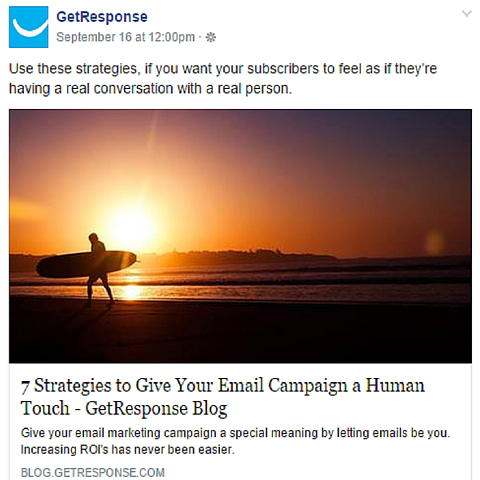
Additionally, GetResponse captured the idea of simplicity in the article linked to in the post: 7 Strategies to Give Your Email Campaign a Human Touch. By presenting content in a simple, straightforward way, readers begin to believe that it's not as hard to connect with their audience through email as they might think and that they've found a solution to their problem.
Key takeaway: You'll get more engagement with your content if you make your audience believe that they can do something. Walk readers through the hard stuff and break it down in easy-to-digest chunks of information so they can take action quickly and easily.
#2: Appeal to Knowledge Seekers
There is nothing people love more than an explanation. In fact, in the well-known Xerox study, Ellen Langer and her colleagues conducted a simple experiment to see how people reacted when someone tried to cut in line at the Xerox machine. Ellen discovered that she was allowed to cut the line more frequently when she explained to people why she needed to.
The word “why” is one of the trigger words you can use in your own social media marketing. Use “why“ to ignite readers’ brains to want to search for the answer to a question.
Get World-Class Marketing Training — All Year Long!
Are you facing doubt, uncertainty, or overwhelm? The Social Media Marketing Society can help.
Each month, you’ll receive training from trusted marketing experts, covering everything from AI to organic social marketing. When you join, you’ll also get immediate access to:
- A library of 100+ marketing trainings
- A community of like-minded marketers
- Monthly online community meetups
- Relevant news and trends updates
Eric Enge from Stone Temple Consulting used this strategy to create the Here's Why video series for his target audience. In the Here's Why post below, Eric poses a question to reader: Why Is SEO So Hard?

Discover Proven Marketing Strategies and Tips
Want to go even deeper with your marketing? Check out the Social Media Marketing Podcast! Publishing weekly since 2012, the Social Media Marketing Podcast helps you navigate the constantly changing marketing jungle, with expert interviews from marketing pros.
But don’t let the name fool you. This show is about a lot more than just social media marketing. With over 600 episodes and millions of downloads each year, this show has been a trusted source for marketers for well over a decade.
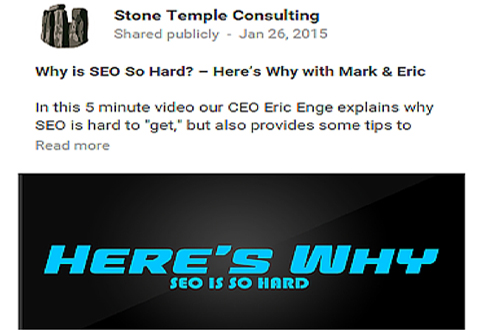
If you weren't thinking about that question before, you likely are now. Why is SEO so hard, anyway? Eric provides just enough information to grab the audience's attention. He tells them what they can expect and how they will benefit from watching the 5-minute video.
Key takeaway: Communicate to your audience why they need something and how they're going to get it by reading your content, watching your video or using your product.
#3: Tap Into the Fear of Missing Out
It's human nature to be apprehensive about being left out. We want to be in the know and be where the action is happening. We want to be included. If we say no to an opportunity, we fear we'll miss out on something that could be of great benefit to us.
For example, if there's an important conference in your industry, you may be compelled to attend because you fear you'll miss out on great opportunities that other people in your industry will be afforded.
With a good industry conference, you can build your brand and business by networking with new and long-time colleagues. You can also attend sessions that help you improve your craft. The opportunity is so compelling that you're afraid if you don't attend, you'll read lots of enthusiastic posts about it in your news feed and kick yourself for missing out on something that could help you.
Your draw doesn't have be as large-scale as a conference. Maybe, for your business, you should offer a book your community is reading, a piece of content you offer (like an industry report) or access to extended features of your tool or service. Whatever it is, invite your audience to become part of the experience.
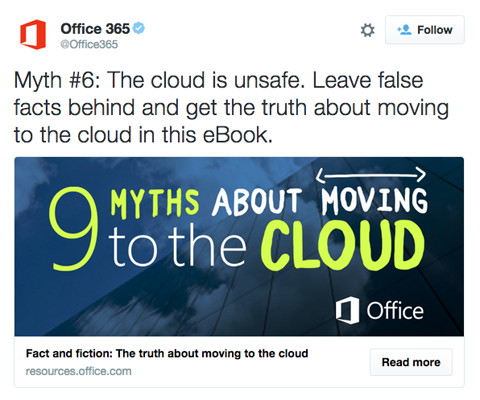
When you start including your audience in what you’re doing, you'll see an improvement in your social media engagement. Don't allow audience members to fear missing out with your business. Give them every opportunity to participate with you.
It's all about the inclusion. You should start implementing this into your social strategy, because involving your audience in what you're doing will make it more personal to them as well. It will create a sense of ownership with your brand.
Key takeaway: Identify valuable content that you can provide to people in your industry that they'll say yes to without even thinking about saying no.
Over to You
Do you ever wonder how successful brands get so much attention and engagement with their social posts? A great way to connect with your audience is to incorporate psychological principles when creating your content.
What do you think? Have you tried using some of these psychological principles in your social posts? Are you seeing an uptick in engagement and conversions? What psychological tactics are creating the most engagement for your brand's content? Please share your thoughts and experiences in the comments below.
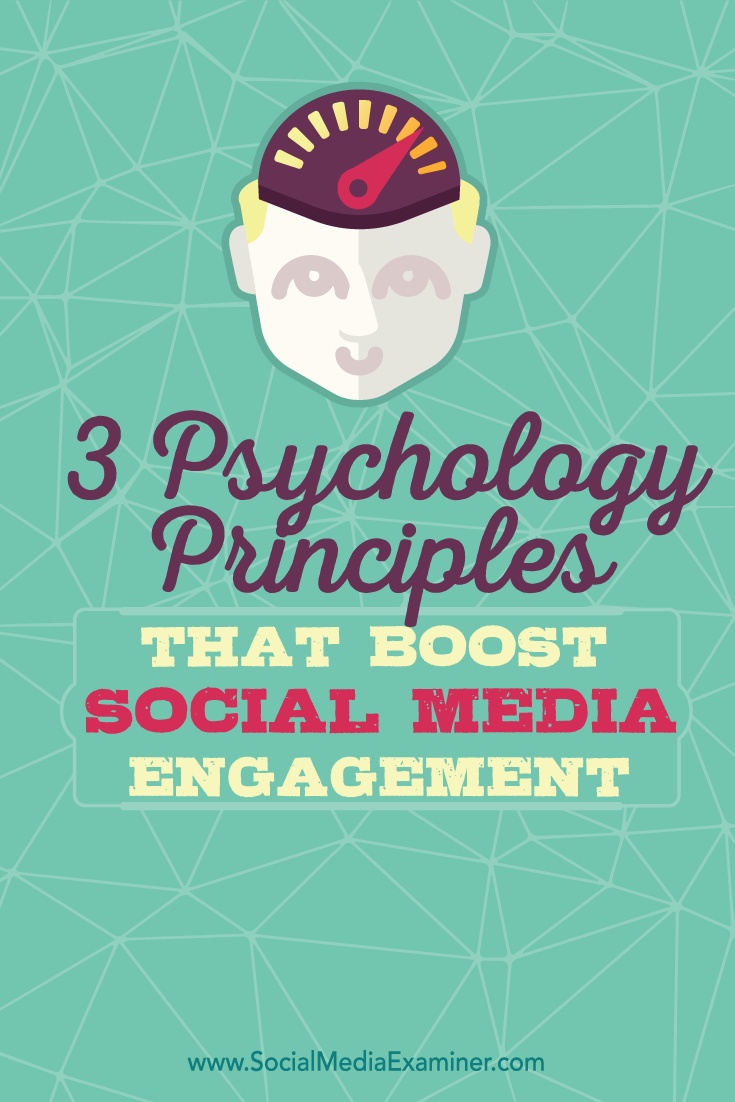
Attention Agency Owners, Brand Marketers, and Consultants

Introducing the Marketing Agency Show–our newest podcast designed to explore the struggles of agency marketers.
Join show host and agency owner, Brooke Sellas, as she interviews agency marketers and digs deep into their biggest challenges. Explore topics like navigating rough economic times, leveraging AI, service diversification, client acquisition, and much more.
Just pull up your favorite podcast app, search for Marketing Agency Show and start listening. Or click the button below for more information.

